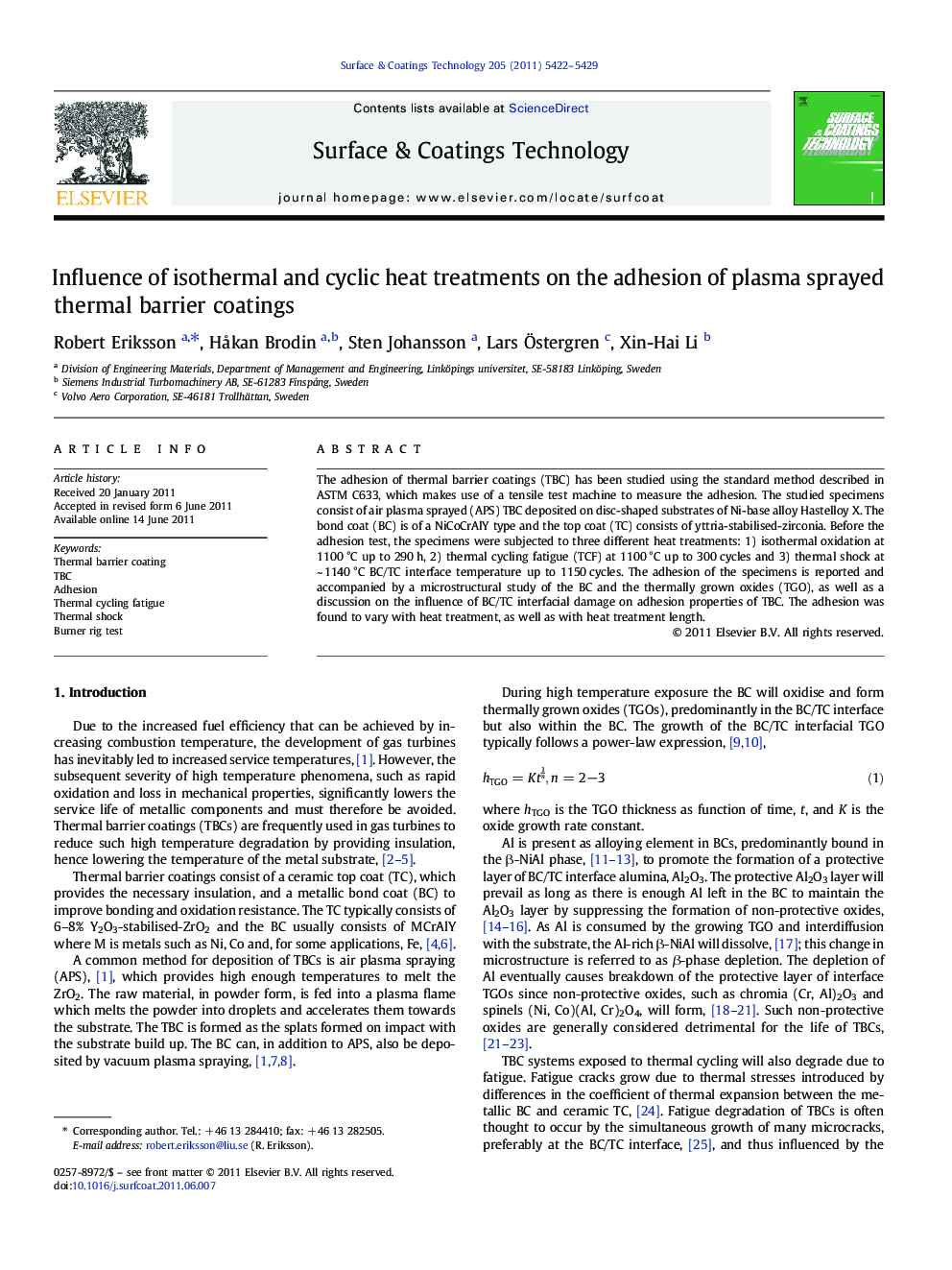| Article ID | Journal | Published Year | Pages | File Type |
|---|---|---|---|---|
| 1658992 | Surface and Coatings Technology | 2011 | 8 Pages |
The adhesion of thermal barrier coatings (TBC) has been studied using the standard method described in ASTM C633, which makes use of a tensile test machine to measure the adhesion. The studied specimens consist of air plasma sprayed (APS) TBC deposited on disc-shaped substrates of Ni-base alloy Hastelloy X. The bond coat (BC) is of a NiCoCrAlY type and the top coat (TC) consists of yttria-stabilised-zirconia. Before the adhesion test, the specimens were subjected to three different heat treatments: 1) isothermal oxidation at 1100 °C up to 290 h, 2) thermal cycling fatigue (TCF) at 1100 °C up to 300 cycles and 3) thermal shock at ~ 1140 °C BC/TC interface temperature up to 1150 cycles. The adhesion of the specimens is reported and accompanied by a microstructural study of the BC and the thermally grown oxides (TGO), as well as a discussion on the influence of BC/TC interfacial damage on adhesion properties of TBC. The adhesion was found to vary with heat treatment, as well as with heat treatment length.
► Adhesion tests for isothermally and cyclically heat treated thermal barrier coatings. ► Comparison between thermal cycling fatigue and burner rig test. ► No change in adhesion for isothermal heat treatment. ► Cyclic heat treatment gave lower adhesion.
